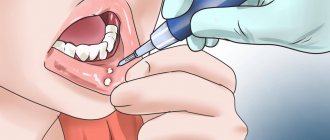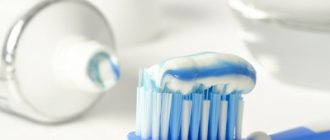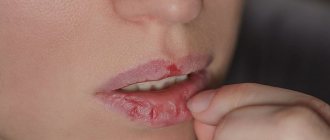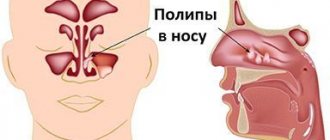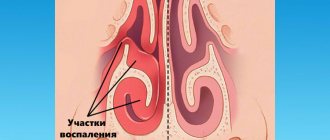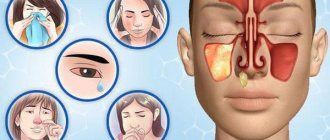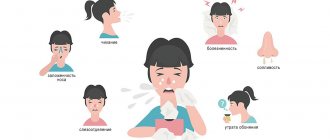30% of patients of ENT doctors come to clinics with complaints of diseases of the nose and paranasal sinuses. As a rule, these are sinusitis, sinusitis and other viral infections. Against the background of these diseases, inflammatory processes often develop in the paranasal sinuses. The main and unpleasant symptom of inflammation in the sinuses is pain.
Why do we have such a hard time with pain and inflammation in the sinuses? Is it possible to eliminate or reduce pain? To answer these questions, it is important to understand why we need the maxillary sinuses and why it is important to take care of their health.
How do the paranasal sinuses work?
The nose is one of the most important human organs. This system is complex and quite fragile, which leads to frequent illnesses. But without the maxillary sinuses, normal nose function would be impossible. They perform the following functions:
- provide full breathing;
- warm and humidify the inhaled air;
- clean the inhaled air from dust and allergens;
- allow you to recognize many aromas and smells;
- form an individual timbre and other voice parameters.
The sinuses have other tasks as well. For example, they quickly respond to changes in environmental pressure (act as baroreceptor organs) and reliably protect the eyeballs, tooth roots and skull bones from injury.
Why does inflammation of the sinuses develop?
Pain in the sinuses most often acts as one of the main symptoms of sinusitis or its varieties, for example, sinusitis, sinusitis and ethmoiditis. With sinusitis, the inflammatory process is localized in the paranasal sinuses of the upper respiratory tract, and with sinusitis, the maxillary sinuses become inflamed.
Why do the sinuses hurt with these diseases? These air cavities connect to the nasal cavity, which in turn is connected to the throat and ear canals. If a healthy person constantly produces mucus in the sinuses, which flows into the nose at a speed of 1 cm/min, then during the inflammatory process the following processes are observed:
- mucus production increases significantly and pus quickly forms in the sinuses;
- narrow passages for the outflow of mucus are completely blocked, it becomes difficult to breathe;
- fluid accumulates in the sinuses and presses on the walls - this is how a person begins to experience pain.
Which doctor should I contact?
Initially, if a sharp pain appears in the nose or ear, you can contact a therapist or otolaryngologist. If there is inflammation of the nerve, the patient may be referred to see a neurologist. Also, in case of injury, the help of a surgeon or traumatologist may be required.
When the presence of tumors in the nasal cavity or ear canal is detected, the person is sent to see an oncologist. After examination, in some cases he can confirm the benignity of the tumor, and if necessary, send the patient for tests, including a tissue biopsy of the tumor.
When a sharp pain in the ear appears, only a specialist can determine what to do. The same applies to problems in the nose area. Self-medication will easily lead to aggravation of the condition.
What are the causes of blocked sinuses?
There are usually several reasons:
- infections and viruses;
- polyps and tumors;
- allergies.
It has been proven that 90% of acute respiratory viral infections lead to the development of sinusitis of varying severity. And bacterial infections provoke sinusitis only in 0.5-2% of cases.
The sinuses most often hurt due to acute sinusitis, sinusitis, sinusitis or ethmoiditis. Symptoms of the disease appear as follows:
- Sinusitis. It will be “given away” by inflammation in one or more paranasal sinuses. When the inflammatory process occurs on one half of the face, we speak of hemisinusitis, when on both halves, we speak of pansinusitis. Acute sinusitis may include weakness, headache, fever, and changes in blood tests.
- Frontit. This is an inflammation of the frontal, or frontal, sinuses. With this disease, there is a characteristic increasing pain and pressure in the forehead, brow ridges and eyes. Other symptoms include general weakness, fever, and difficulty breathing.
- Ethmoiditis. It is an inflammation of the ethmoid labyrinth. The pain is localized in the center of the face. There is dark yellow-green nasal discharge, headache, high fever, swelling of the eyelids and fear of light, difficulty or complete absence of breathing.
- Sinusitis. The symptoms of sinusitis are difficult to recognize: the inflammatory process begins without fever. But with this disease there is a characteristic pain in the area of the face under the eyes. With sinusitis, there may be no nasal discharge, which also complicates diagnosis.
From runny nose to migraine
There are many causes of headaches; every doctor can, without hesitation, name more than thirty. One of them is chronic and recurrent sinusitis. Up to 88% of patients with recurrent sinusitis suffer from migraine headaches.
Unexpected reason
“It’s her, her again, the invincible, terrible disease of hemicrania, which makes half your head hurt. There is no remedy for it, there is no salvation,” this is how Bulgakov, who himself suffered from this disease for many years, described migraine. Migraine is one of the most common neurological disorders these days. It is included by the World Health Organization in the list of 19 diseases that most disrupt human social adaptation. Migraine affects 3 to 16% of the population in Europe and North America; this disease is more common than asthma, epilepsy and diabetes combined. But it turns out there is a cure for migraines! “The main thing is to correctly determine the cause of its occurrence,” says Alexey Vasilyevich, who has helped hundreds of his patients. As a result of surgical intervention, patients forget forever about debilitating attacks of migraine headaches. But all of them had a history of sinusitis - acute, chronic or latent (hidden).
Many faces of sinusitis
Let's start with anatomy. The system of air cavities in the facial part of the human skull appeared during evolution to lighten an overly heavy skull. “Having risen from four limbs to two, in addition to a lot of advantages, a person also acquired some negative properties. The maxillary sinus of a person, in connection with his transition to an upright state, in contrast to a four-legged creature, has become less functional. After all, the outlet of the paranasal sinuses has become a very narrow neck, and even located on top. Therefore, a person has many more predisposing factors than an animal to develop inflammation of the paranasal sinus. This inflammatory process is called acute sinusitis or acute sinusitis, sometimes acute sinusitis. Most often, sinusitis implies inflammation of the maxillary sinus, the same notorious sinusitis that we are talking about. It can be viral, bacterial or allergic in nature,” says Alexey Vasilyevich.
A common runny nose during ARVI, if left untreated or treated incorrectly, can lead to sinusitis. According to medical statistics, rhinosinusitis develops in 1-8% of patients with ARVI. It also causes 40-50% of all hospitalizations of ENT patients. In 10-15% of cases, rhinosinusitis becomes chronic.
Special offer: consultation with an otorhinolaryngologist and endoscopy of ENT organs Read more
"Harmless" runny nose
“Chronic sinusitis is characterized by the duration of an ongoing inflammatory process (at least 3 months). Among the main signs of the disease are: copious purulent mucous discharge, prolonged intoxication syndrome (weakness, malaise, sweating, elevated body temperature up to 37-37.9 degrees) and, of course, persistent pain syndrome (headaches). From 20 to 27% of all chronic sinusitis is latent sinusitis, which occurs asymptomatically or with mild symptoms over a long period of time, without clear signs of alternating periods of relapse or remission,” explains Alexey Vasilyevich.
Studies using computed tomography have revealed signs of sinusitis in 95% of cases of acute respiratory infections with nasal congestion.
Hidden Enemy
How to recognize latent sinusitis? First of all, symptoms such as a sluggish runny nose, persistent unmotivated headaches in the absence of purulent nasal discharge, deterioration of smell, visual impairment, low-grade fever (about 37 C) should alert you. The flow of mucus down the back wall of the pharynx is also a characteristic symptom of latent and chronic sinusitis. “Permanent swelling of the sinus mucosa during latent and chronic sinusitis causes a vascular response in the form of spasm. If a vegetative-vascular component is added to the edema, a typical picture of migraine occurs: photophobia, intense headaches, nausea and vomiting, which do not always provide relief, and a complete lack of effect from anti-inflammatory therapy. The origin of these pains is based on a sluggish inflammatory process in the sinuses with exacerbations after hypothermia, overwork, or staying in poorly ventilated “stuffy” rooms,” adds Alexey Vasilyevich.
Deformity disease
In addition, the development of latent sinusitis is most often caused by the peculiarities of the anatomical structure of the structures of the nasal cavity, which arise during the growth of the facial skeleton. They lead to disruption of the drainage function of the paranasal sinuses. According to the expert, “in 100% of cases, a relationship between headaches and a deviated nasal septum is revealed. Most often, these features are genetically determined, so latent sinusitis can be called a “family” diagnosis.”
Radical solution
Complex surgical correction (CSC) of the structures of the nasal cavity will help treat headaches caused by sinusitis. This is surgery on the nasal septum, plastic surgery of the inferior and middle turbinates, endonasal polysinsotomy (surgery for polypous or purulent inflammation in the paranasal sinuses using minimally invasive surgery techniques). As a result of surgical treatment, nasal breathing and aeration of the paranasal sinuses are restored, the focus of a sluggish inflammatory process or a congenital anatomical defect is eliminated. “Among the 3,400 patients I operated on with latent and chronic sinusitis who complained of headaches, a positive result was achieved in 100% of cases. Complete recovery was observed in 85% of patients. In the remaining 15%, the result of surgical intervention was an improvement and a decrease in the intensity of headaches. As for those suffering from migraine headaches, among my 284 operated patients aged 16 to 48 years, a positive result was achieved in 100% of cases. More precisely, the disappearance of pain was observed in 94.7% of patients, and a decrease in the intensity of headaches with the disappearance of attacks – in 5.3%.”
Three thousand years after the description of migraine states in ancient Egyptian papyri and two thousand years after the Roman physician Galen, who studied in detail that same hemicrania, contemporaries describe their torment in almost the same way. Splitting headaches are caused by an abnormal interaction between the structures of the skull and the trigeminal nerve, which is located in the deep regions of the brain, passes through the eye socket and extends into the area on the forehead above the eyebrows. The trigger for an attack can be any sudden change in the environment - light, loud sounds, smells, tastes, changes in sleep patterns. Migraine is characterized by a wide range of symptoms: from acute headache to blurred vision, nausea and vomiting, and loss of coordination. Migraine attacks force the patient to lie motionless in a darkened room, sometimes for several days.
How to treat sinus inflammation in adults and children?
Sinusitis, sinusitis and other inflammatory processes have similar symptoms. Treatment in adults will be effective if a specialist makes an accurate diagnosis and selects the optimal complex therapy, which will include:
- special medicines;
- healing procedures;
- prevention.
It is important not only to relieve the symptoms of the disease, but also to eliminate the causes of the disease. And they can be different. Some people have a weakened immune system, while others should have their body examined or give up bad habits and an unhealthy lifestyle.
In children, treatment of sinusitis, sinusitis and other inflammatory processes of the nasal sinuses also includes a whole range of measures:
- it is important to see a doctor quickly to make a diagnosis and avoid complications;
- you need to strictly adhere to the recommendations of specialists and monitor the child’s condition;
- It will be necessary to prevent inflammation in order to maintain the health of the child’s sinuses.
In the fight against serious inflammatory processes, one must not hesitate. For example, sinusitis can lead to inflammation in the skull or meninges. Acute catarrhal sinusitis develops in 70% of children who regularly suffer from ARVI. Odontogenic sinusitis develops in those who have dental problems.
Why does a runny nose occur?
We are accustomed to the fact that a severe runny nose and nasal congestion are symptoms of a cold. Indeed, seasonal diseases lead to infectious rhinitis. This type of runny nose is caused by bacteria from the group of adenoviruses, rhinoviruses, and coronaviruses.
But do not forget about other factors that can cause rhinitis:
- allergic reaction to pollen, chemicals, wool, feathers, etc.;
- long-term use of a vasoconstrictor or a side effect of taking a drug - drug rhinitis;
- overgrowth of adenoids - most often found in children;
- nasal polyps are benign formations that can appear on the mucous membrane and block the flow of air;
- thinning of the nasal mucosa - atrophic rhinitis;
- the presence of a foreign body in the nostril can lead to difficulty breathing and mucus production - this also most often affects children.
In addition, a prolonged runny nose may indicate the presence of a disease such as decreased function of the thyroid gland (latent hypothyroidism) - a hormone test will help identify it.
Autoimmune diseases also cause persistent runny nose and nasal congestion. Among them are rheumatoid arthritis, psoriasis, systemic scleroderma, Wenger's granulomatosis, etc.
How do you know if you have sinus inflammation?
With any inflammatory process, be it sinusitis, sinusitis, ethmoiditis or frontal sinusitis, you will notice 3 characteristic symptoms:
- Problems with nasal breathing – it will be difficult to breathe due to obstruction (blocking of the lumen) of the nasal openings due to swelling.
- Characteristic nasal discharge. They can be permanent or temporary. If there is swelling of the nasal mucosa, there may be no discharge.
- Headache and soft tissue swelling. During inflammatory processes, the face swells in the area of the frontal and maxillary sinuses. Sometimes the periosteum becomes inflamed (pereosteitis).
How to cure sinusitis, sinusitis and other inflammations?
What you definitely shouldn’t do is diagnose yourself and buy medications without a prescription or doctor’s recommendations. If sinusitis is mild, then the body will quickly cope with the source of the problem and defeat the infection or virus. But if sinusitis has become chronic, special therapy is needed:
- medicines that clear the air passages;
- antibacterial drugs to eliminate infection;
- rinsing the sinuses with antibiotics;
- surgical intervention in selected cases;
- regular preventive measures.
Of course, it is better to prevent sinusitis from becoming severe. Indeed, in this case, surgical intervention cannot be avoided. Why is this scary?? Just look at the image below, the hand-drawn picture of surgical techniques will give you a chill between your shoulder blades!
Prevention is the best remedy for sinus inflammation
Of course, no one can be 100% insured against sinusitis and more severe inflammatory processes. Prevention will help strengthen the immune system and build a protective barrier against viruses, bacteria and infections. To prevent sinusitis without symptoms in an adult or child, you should follow simple rules:
- Avoid hypothermia. Yes, low temperature in itself does not provoke colds and runny nose. But it causes a narrowing of blood vessels and makes the mucous membranes more vulnerable to viruses and infections. In cold, rainy and windy weather, it is important to properly insulate - and you will not face chronic inflammation of the sinuses.
- Rinse your nose more often. This should be done in the fall during epidemics of colds and flu, as well as in the spring during the flowering of trees and shrubs. For rinsing, ordinary saline solutions are suitable, which effectively remove bacteria and allergens.
- Eat properly. The immune system weakens due to lack of nutrients. Include more natural products in your diet - fresh meat and fish, grains and slow carbohydrates, vegetables and fruits. It’s better to avoid processed foods and fast food, or at least reduce their consumption to a minimum.
- Drink vitamins. Nowadays there are many special vitamin complexes and supplements with herbal active ingredients. They work gently but effectively: the result is noticeable within 1-2 weeks. And most importantly, they are completely safe, non-addictive and have no side effects.
Diagnostic methods
Before starting treatment, the doctor will prescribe an examination that will determine the cause of pain and poor health. As a result of the examination, swelling, redness of the skin and mucous membranes of the nose, rash and other characteristic signs of a number of diseases can be detected. The patient needs to clarify when and under what conditions the first symptoms appeared. However, additional techniques will be required to make a final diagnosis.
- Rhinoscopy is one of the simplest procedures that allows the doctor to examine the internal structures of the nose using a mirror. To examine the anterior parts of the nose, it is enough to use a nasal speculum. It is wide and is used to assess the condition of the nasal turbinates and septum, as well as the mucous membrane. If necessary, the doctor uses a nasopharyngeal speculum. It is small, placed on a thin metal stick. Access to the tissues under study is carried out from the oropharynx.
- Endoscopy is a more invasive, but informative procedure. It is performed using an endoscope. It is a miniature camera on a thin, flexible tube that easily follows the movement of the nasal passages. Endoscopy allows you to examine the mucous membrane of the internal structures of the nose, identify injuries and neoplasms, and also take samples for biopsy.
- Diaphanoscopy is a method of examining the paranasal sinuses. It is performed in a dark room, with a special glowing lamp in the patient’s mouth. Normally, the sinuses are filled with air, so they are visible during diaphanoscopy. However, when they are filled with liquid or purulent contents, they become dark.
- Ultrasound diagnostics - prescribed for suspected sinusitis and frontal sinusitis. However, for most diseases of the inner nose, this technique is ineffective.
- CT, MRI - are used when injuries, neoplasms, or structural anomalies of the internal structures of the nose are suspected. The procedures are planned and prescribed when standard diagnostic methods are insufficiently effective.
The Clinical Institute of the Brain has all the capabilities for full diagnostics. The doctors have high-quality, modern equipment and many years of experience in treating diseases of the nose and head. They can ensure that the examination will involve a minimum number of tests to help determine the cause of the pain and the stage of the disease.
What can be included in therapy during treatment?
Don’t know how to treat maxillary sinusitis besides pills? You need herbal preparations. They are good both in the treatment of existing inflammatory processes and as a preventive measure. Their effectiveness is explained by the special composition of active components. As a rule, these are herbal extracts.
Each capsule of this product contains a whole set, including up to 10 or more medicinal plants. It is this composition that helps to quickly eliminate the causes of the disease - any viruses and bacteria in the body, and also helps to cure sinusitis or sinusitis at an early stage.
Just one capsule a day - and your sinuses breathe freely, and your health remains normal even during seasonal colds!
